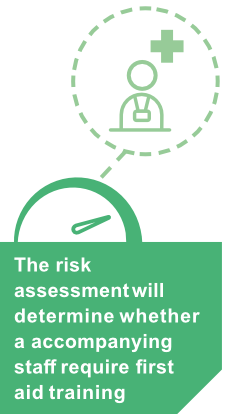Access to medical assistance and facilities, and the standard of those facilities, needs to be outlined to participants and parents in the early planning stage. The aims and objectives of the visit can influence the degree of risk that parents and participants will find acceptable.
For example parents of a young person going on an Overseas Visit to Europe could reasonably expect access to similar medical care to that available in the UK. By contrast, the parents of a young person taking part in a visit to a developing country would need to accept that access to medical care is limited.
When considering the location of an Overseas Visit it is an important part of the risk assessment to consider:
- The type of medical facilities available
- How quickly medical care can be accessed
- The aims and objectives of the visit
- The age of the participants
- Any known medical needs

The risk assessment process will assist Heads of Establishment and Visit Leaders to agree the level of first aid provision that is required.
Although it would always be advisable to have a trained First Aider accompanying any Overseas Visit, it may be the case, that where the risk assessment determines the risk to be low, it may not be necessary to provide a trained first aider among the accompanying staff.
By contrast, if the risk assessment indicates a raised or high level of risk it will be necessary for one or more of the accompanying staff to hold a first aid certificate.
It should be noted that there are different levels of first aid training and qualification. Visit Leaders should consult with their Local Authority or Employer to establish the level of first aid required








